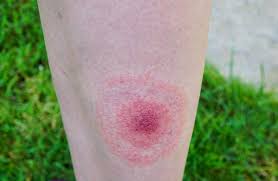
Breaking News
 Tether claims billions in profits as it grows 'secured loans'
Tether claims billions in profits as it grows 'secured loans'
 DC PANICS as Pam Bondi's Grand Jury CHANGES EVERYTHING!
DC PANICS as Pam Bondi's Grand Jury CHANGES EVERYTHING!
 Sydney Sweeney Ad Outrage & MAGA Memes: DNC Bankruptcy, Deep State Exposed! Trump 2025
Sydney Sweeney Ad Outrage & MAGA Memes: DNC Bankruptcy, Deep State Exposed! Trump 2025
Top Tech News
 3D printing set to slash nuclear plant build times & costs
3D printing set to slash nuclear plant build times & costs
 You can design the wheels for NASA's next moon vehicle with the 'Rock and Roll Challenge
You can design the wheels for NASA's next moon vehicle with the 'Rock and Roll Challenge
 'Robot skin' beats human reflexes, transforms grip with fabric-powered touch
'Robot skin' beats human reflexes, transforms grip with fabric-powered touch
 World's first nuclear fusion plant being built in US to power Microsoft data centers
World's first nuclear fusion plant being built in US to power Microsoft data centers
 The mitochondria are more than just the "powerhouse of the cell" – they initiate immune...
The mitochondria are more than just the "powerhouse of the cell" – they initiate immune...
 Historic Aviation Engine Advance to Unlock Hypersonic Mach 10 Planes
Historic Aviation Engine Advance to Unlock Hypersonic Mach 10 Planes
 OpenAI CEO Sam Altman Pitches Eyeball-Scanning World ID to Bankers
OpenAI CEO Sam Altman Pitches Eyeball-Scanning World ID to Bankers
 New 3D-printed titanium alloy is stronger and cheaper than ever before
New 3D-printed titanium alloy is stronger and cheaper than ever before
 What is Unitree's new $6,000 humanoid robot good for?
What is Unitree's new $6,000 humanoid robot good for?
 "No CGI, No AI, Pure Engineering": Watch Raw Footage Of 'Star Wars'-Style Speeder
"No CGI, No AI, Pure Engineering": Watch Raw Footage Of 'Star Wars'-Style Speeder
Scientists Develop New Test That Can Diagnose Lyme Disease in Just 15 Minutes

Finally, a team of scientists have developed a rapid microfluidic test that can detect Lyme disease in just 15 minutes.
Caused by the bacterial species Borrelia burgdorferi and transmitted by the bite of infected Ixodes ticks, the disease can cause serious neurologic, cardiac, and/or rheumatologic complications if left untreated.
Current testing for Lyme disease, called the standard 2-tiered approach (STT) involves running two complex assays (ELISA and western blot) to detect antibodies against the bacterium, and requires experienced personnel in a lab, as well as a few hours to carry out and interpret.
Now, a research team led by Sam Sia, professor of biomedical engineering at Columbia Engineering, has developed a rapid microfluidic test that can detect Lyme disease with similar performance as the STT in a much shorter time.
"Our findings are the first to demonstrate that Lyme disease diagnosis can be carried out in a microfluidic format that can provide rapid quantitative results," says Sia. "This means that our test could easily be used directly in a doctor's office, obviating having to send the samples out to a laboratory."

 Anonymous Email Forwarding
Anonymous Email Forwarding 

